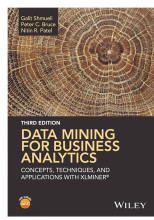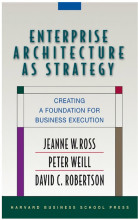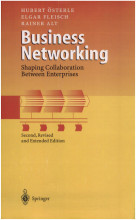Summary: Data Mining For Business Analytics Concepts, Techniques, And Applications With Xlminer | 9781118729243 | Galit Shmueli, et al
- This + 400k other summaries
- A unique study and practice tool
- Never study anything twice again
- Get the grades you hope for
- 100% sure, 100% understanding
Read the summary and the most important questions on Data Mining for Business Analytics Concepts, Techniques, and Applications with XLMiner | 9781118729243 | Galit Shmueli; Peter C. Bruce; Nitin R. Patel
-
1 Introduction to BI & BM
This is a preview. There are 18 more flashcards available for chapter 1
Show more cards here -
Which analytics methods are there
Retrospective:
1. Descriptive analytics: use data to understand past and present (SQL, OLAP)
2. . Diagnostic analytics – Explain why something happened
Prospective
3. Predictive analytics: predict future behavior based on past behavior (Time series, clustering, decision trees, NN)
4. Prescriptive analytics: make decisions or recommendation to achieve the best performance (simulation, optimization, AI) -
Which business intelligence methods are retro and which are prospective?
Retro: descriptive and diagnostic
pro: predictive andprescriptive -
Which function do we use with descriptive analytics?
– Database management – Data warehousing framework – Business reporting, OLAP databases, dashboards -
Which function do we use with predictive and prescriptive analytics?
– Data mining process – Regression models – Naive Bayes & k-nearest neighbor – Decision trees – Association rules – Clustering -
One view: what is BA?
predictive + prescriptive analytics -
What is the BI process?
The objective of the BI product is to provide historical, current and predictive views of business operations. Information/knowledge that could relate to: - Understanding customer preferences - Coping with competition - Identifying with opportunities - Enhancing internal efficiency BI solutions support the BI process by utilizing BI tools. -
Which BI tools and techniques do we know
- Data warehousing
- Knowledge management
- Query and reporting
- Online analytical processing
-Digital dashboards
- Data, process, and text mining
- Statistics
- Visualization -
What is Business Intelligence Architecture
The idea: data flows through the veins of the organization. For example: a customer buys something, than a certain event is created in the sales database. All the different databases have a ‘local’ view on the business. Some parts of the data are interesting for decision making. To use the data, ETL is used. After the ETL the clean data is stored in a data warehouse. After that, a large set of techniques is available to provide insights for the decision maker. -
What is a database?
Database = a collections of related tables, designed, maintained and utilized by multiple users, with software to update and query the data. So, it’s not comparable with multiple excel tables, because database tables are related to each other.
A database is also an environment to Manipulate data using a query language (e.g. SQL), and it is often an client/server architecture. The clients are active (low processing and very thin) and the database server is relatively passive (but does a lot of processing, is thick). -
What is a DBMS
is the software that controls the data (Oracle, DB2, MySQL, MS Access) Internal memory is very important for a database
- Higher grades + faster learning
- Never study anything twice
- 100% sure, 100% understanding
Topics related to Summary: Data Mining For Business Analytics Concepts, Techniques, And Applications With Xlminer
-
Introduction to BI & BM
-
SQL and Data Warehousing - Database issues
-
SQL and Data Warehousing - Data Warehouse Framework - Components
-
SQL and Data Warehousing - Data Warehouse Framework - Architectures
-
OLAP business databases - data warehousing & ETL
-
OLAP business databases - some technical OLAP issues
































